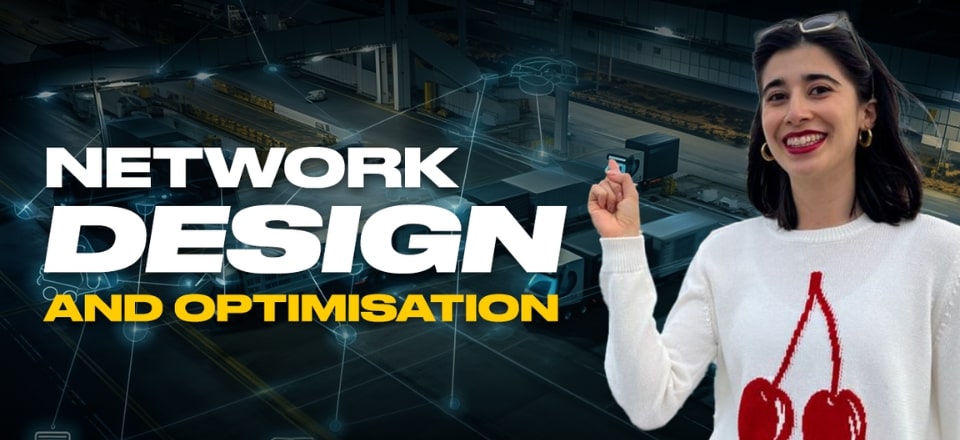Discover the key to optimizing network design, which is crucial for a thriving supply chain.
Inefficient network configurations often plague organizations, resulting in avoidable expenses and delays.
Watch Sofia Rivas Herrera’s video for expert insights on enhancing your supply chain through effective network design and optimization.
Distribution Network Design Discussion with Sofia
Distribution network design is a vital yet often underappreciated aspect of supply chain management. Sofia Rivas Herrera, from HP’s global supply chain team, excels in transforming physical challenges into mathematical models, a key element of effective network design.
What exactly is distribution network design? Sofia simplifies it for us: picture a map showing your manufacturing centers, distribution hubs, and customers. Each point, or node, on this map represents a part of your supply chain, connected by lines indicating the flow of goods. The goal is to optimize these connections to meet objectives such as reducing costs or minimizing CO2 emissions. Sofia likens this process to using a blender, combining various elements to find the perfect mix. She emphasizes that the success of any tool depends on the quality of the data it uses. Mistakes often occur when real-world problems are not accurately translated into mathematical models, highlighting the need for skilled professionals in this field.
Merging Theory with Real-World Application
Understanding theoretical principles helps professionals predict expected outcomes, crucial for verifying the results generated by tools. Practical experience complements this, allowing adjustments to theoretical models based on real-world constraints. A common mistake is choosing a tool without fully understanding the problem, much like buying a hammer without knowing what needs fixing. Whether it’s an ERP system, a WMS, or a TMS, the key is to start with a clear objective and then select the appropriate tool for distribution network design.
Sofia’s Passion for Network Design
Sofia is passionate about distribution network design because of its real-world applications and problem-solving potential. Building and testing scenarios to find optimal solutions provides a sense of scientific discovery. Looking ahead, Sofia believes that distribution network design will play a crucial role in achieving sustainability goals. As companies strive to reduce their carbon footprints, optimizing supply chains becomes vital. Although AI can accelerate this process, Sofia cautions against over-reliance on AI without a strong theoretical foundation.
Reflecting on the practical side of distribution network design reveals its power to uncover innovative solutions. Accurate data input is essential—garbage in, garbage out, as Sofia wisely notes. She also predicts the growing importance of distribution network design, driven by sustainability initiatives and AI advancements. As businesses navigate complex supply chains, the ability to design and optimize these networks will become increasingly crucial.
Related articles on this topic have appeared throughout our website, check them out:
- 6 Critical Success Factors in Distribution Network Design
- Do You Know the Signs of Poor Distribution Network Design?
- 10 Reasons to Review Your Distribution Network Design
- The Long and Short of Designing a Distribution Network
- 7 “Costequences” of Distribution Network Misalignment
Editor’s Note: The content of this post was originally published on Logistics Bureau’s website dated April 17, 2024, under the title “Network Design and Optimisation – A User Perspective“


